Nothing quite prepares you for the sight of the Parthenon that looks like it is still under construction. Which it still is, in a manner of speaking, but not quite in a way that we imagined. Putting it in its place as "the most important ancient site in the western world" requires today's visitors to exercise their imaginations quite a bit. Fortunately for them, the task is made easier by the presence of the fabulous Acropolis museum right below the real Acropolis where the pieces have been reassembled painstakingly to reflect the grandeur of the original vision. In fact, what you see at the actual site are replicas made to look like the weather worn ancient originals that are now down below in the museum (or in far off museums where they were taken to in the past). But we'll come to the Acropolis museum later.
So, what is wrong with the Parthenon (and the Acropolis) today? Simply put, the presence of construction equipment mars the experience for the visitor. It cannot be helped as the work being undertaken is crucial to the continuity of the monument, but one has to describe it as one sees it. If you get over the disappointment of it not looking like what you imagined it to be, you can derive some satisfaction from the fascinating details about the Parthenon that you may not be aware of. For instance, the tall pillars are not all the same size. The corner ones are larger. The pillars are curved convex, the base platform concave. So, why should you care? Because these deviations were carefully incorporated into the design in order to provide the optical illusion of perfection. Had they been constructed along perfect geometric lines, they would appear curved when looked at as a whole.
A brief history of the Acropolis should provide some useful context. The first temples on the hill were built during the Mycenean era in homage to the Goddess Athena. The traumatic battles with the Persians (5th century BC) resulted in much destruction and it was Pericles who set about rebuilding the city on top of the hill. This city of temples is what influenced future generations and empires of the western world and still does today. The city went through several more destructive events over the centuries, a combination of pilfering, earthquakes, faulty renovations, industrial pollution, tourists. The biggest catastrophe was the 1687 explosion caused by the Venetians when they attacked the city.
Fortunately, some of the other structures on the Acropolis are in much better shape to be admired for their current visual impact. The two level Erechtheion has much to hold the interest of the curious visitor. While the Parthenon was the showpiece of the Acropolis, it was the Erechtheion that was more sacred. This is where the epic battle between Poseidon and Athena took place and Athena was judged the victor after she produced the olive tree in response to Poseidon striking the ground with his trident to bring out a jet of (salty sea) water. The olive tree won and so the privilege of protecting the city went to Athena and hence it is (still) called Athina (Athens). These mythical events are said to have taken place at the Erechtheion where you can presumably see signs of the battle. The Erechtheion is immediately recognizable by the presence of the Caryatids - six columns that feature human female forms supporting the roof. It is hard to believe that the figures you see in the Acropolis are just copies and the originals are in the museum just a few hundred feet below.
Video of Acropolis
The colossal bronze statue of Athena Promachos by Pheidias, that used to stand on the Panathenaic way is long gone. The 9m high statue symbolized Athenian invincibility against the Persians. The helmeted goddess held a shield in her left hand and a spear in her right. Emperor Theodisius took it to Constantinople in 486 AD. It stood there till 1204 when it lost the spear. This led inhabitants to believe that she was beckoning the crusaders and so they smashed her to pieces. Another statue of the goddess by Pheidias, Athena Parthenos, stood inside the Parthenon. In this she held a statue of Nike (Victory) in her right hand and a spear in her left. By the original proportions, the Nike statue on her hand would have been the size of an adult human. A replica of this statue (labeled Varvakeion Athena) stands in Athens' Archeological Museum.
The Beule gate that leads the visitor up the hill, the Propylaia that forms the towering entrance and the little Temple of Athena Nike perched atop a steep ridge are some of the other structures on the top. On one side is the Odeon of Herodes Atticus with renovated seating rows and below is the Theatre of Dionysus. The panoramic 360 degree view of the city of Athens that can be had from the top is particularly enjoyable. It was a windy Thursday with rain threatening, but we managed to get a good look at this ancient city from its iconic centrepiece. In the immediate vicinity are several of Athens' historic sites - The Temple of Olympian Zeus and Hadrian's Arch, the Ancient Agora, The Roman Forum and Tower of Winds, Hadrian's Library, the Keramikos cemetery, the modern Parliament building, train stations, the quaint village of Anafiotika directly below, the Mars hill where St. Paul is said to have preached, Filopappau Hill, Likavitou Hill - it is an exhaustive list, but is a very useful way to make your own plan to visit the city.
Video of Athens viewed from the Acropolis
The immediate surroundings (particularly the Plaka village directly beneath where we stayed) are said to hold many more archaeological treasures but no one is going to displace those urban areas just for the sake of history. The many souvenir shops and restaurants that throng this neighbourhood to exploit their city's fame may not take too kindly to such an idea despite the fact that they owe their livelihoods to similar past endeavors.
The Acropolis Museum is open till late in the evening - this is quite commendable considering that the other sites have 3 pm winter closures. The mixed photo policy can be confusing (non-flash photography allowed on the 3rd floor, none allowed on the first two floors). However, the construction of the museum and its faithfulness to the monument that it honors is a very moving testament to the spirit of human culture that values history. It is quite breathtaking to consider the lengths some of us will go to, to preserve historical artifacts for posterity. Even before you enter the museum, you will notice that you are walking on large chunks of transparent glass floors with the actual excavated site right below you. You can see this even from the upper floors which themselves have a few glass floor sections. At times, you can see three levels below you, not a sight for those with fear of heights.
You could spend hours admiring the koure and the kouros at the lower floor, as well as the stunning statues of the Greek Gods and Goddesses enacting their epic business. Athena's slaying of the Giant Enceladus who causes earthquakes (still) is worth a detailed look. And, of course, you have to get a close look at those Caryatids from the Erechtheion, especially if you are aware that the originals are inside the museum while their copies absorb the industrial pollution outside.
But, it is the third floor that will floor you and leave you gasping in wonder. It features nothing short of a recreation of the Parthenon itself, in its three-dimensional entirety. There are no small measures here, no straight line installation of endless statues. Instead we have a glass enclosed space that is at an angle from the floor below. Reason? This massive glass box is aligned with the Parthenon just a few hundred feet away and above, visible through the glass walls as a constant reminder of what it is that you are looking at. And what exactly are you looking at? The recreation of the statues on the eastern and western pediments, the relief sculptures found on the inner walls and the 92 metopes (friezes). What is depicted on these? Even if your interest is casual, it will be worth your while to pay a little attention here so you can appreciate the work put into creating these stone monuments and those of the current generation in recreating those to make copies. Depicted on the metopes are the figures of Athenians fighting the giants, Athenians fighting the Amazons, the battle between the Lapiths and the Centaurs (half human, half horse) and the battle between Athena and Poseidon. The reconstruction itself is a curious mix - the few surviving original fragments have been installed inside the museum, those that are in other parts of the world (most significantly in the British Museum, London, which they are striving hard to get back) have been replicated.
All this is rounded off with a video that runs on a giant screen outside that explains the details with animated visuals. And if you are still not satisfied, there are 3-D miniature models enclosed in glass cases that provide the complete picture. This is one museum experience you are not likely to forget in a hurry even if it is densely packed within layers and layers of other proximate archaeological and museum visits. Like our own immediate history and future has been and will be. Spare a thought for us too. Oh our heads, they so feel the burden.
Google Maps Link
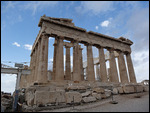
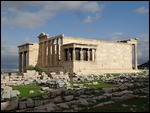
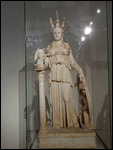
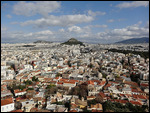

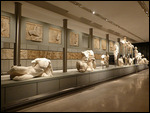

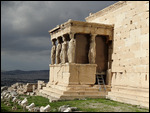

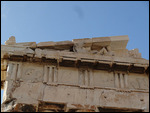

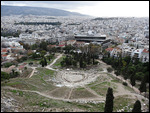

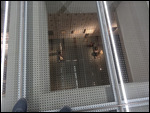

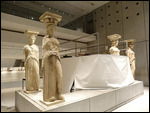


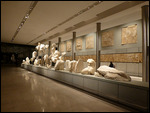
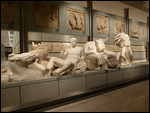

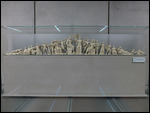
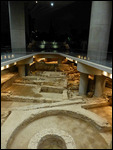



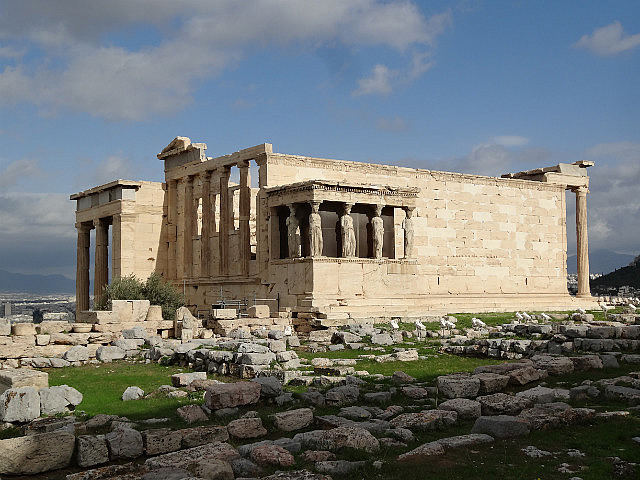
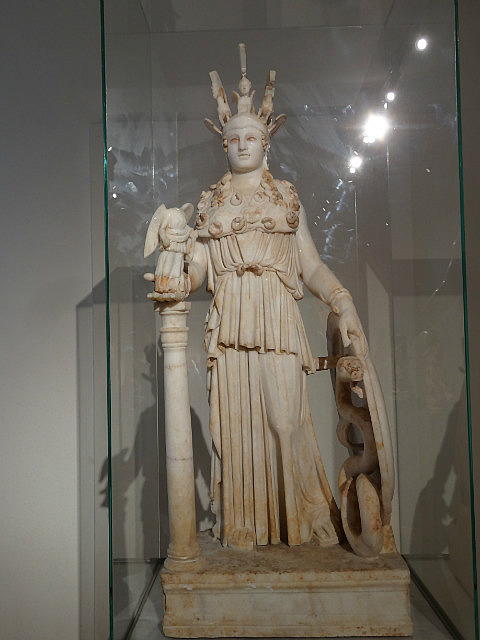
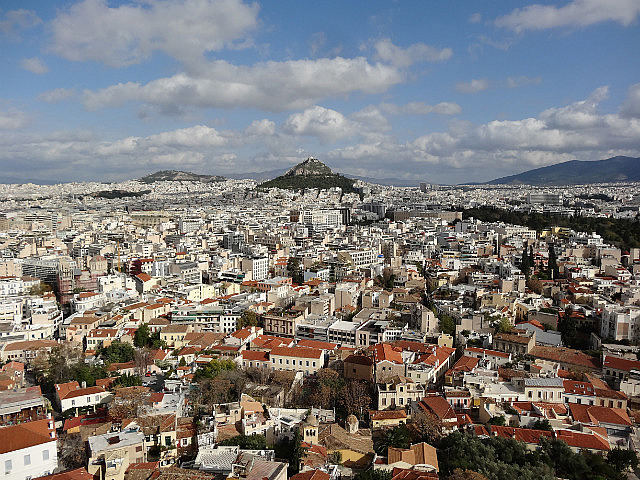

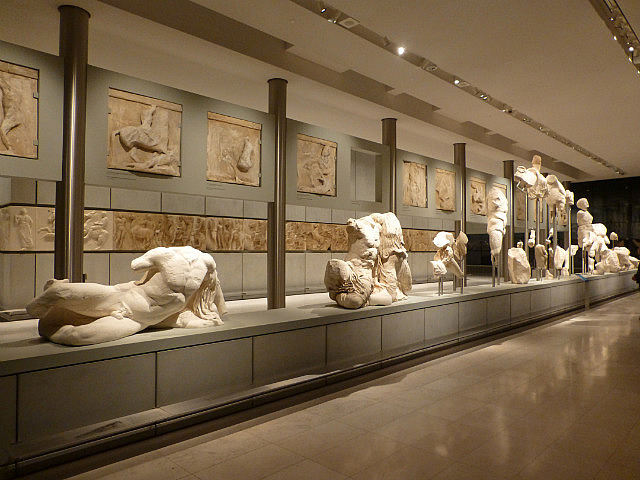
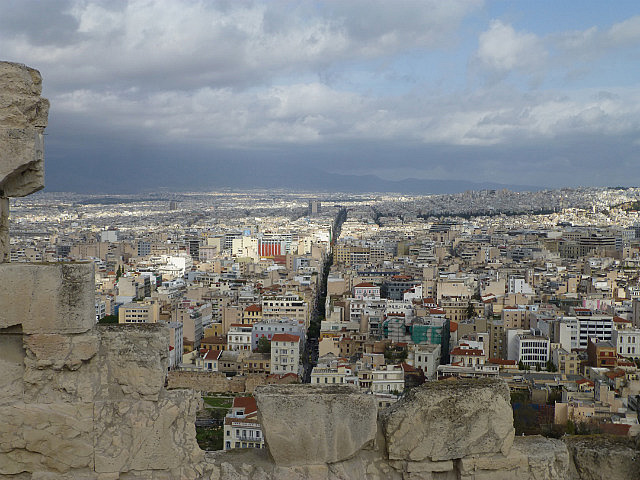
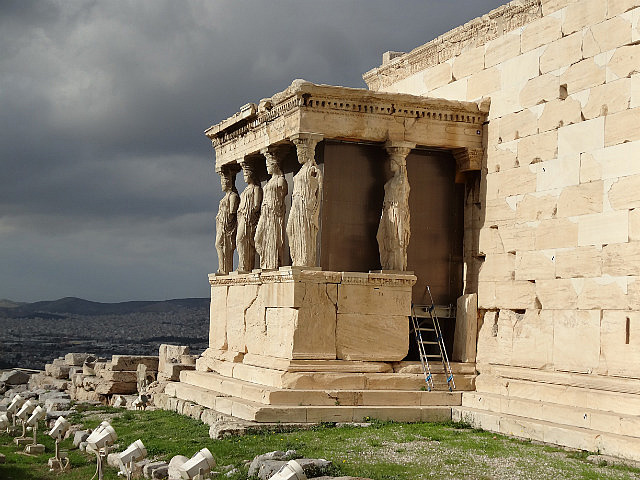
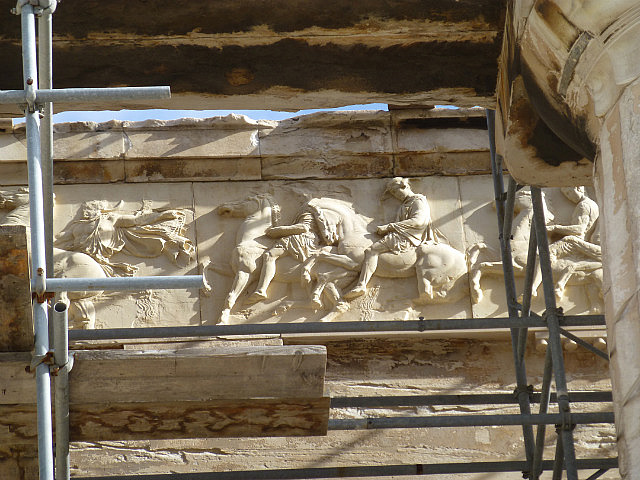
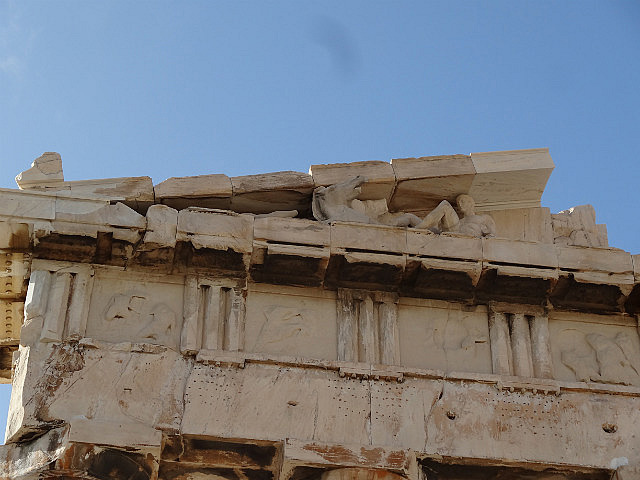

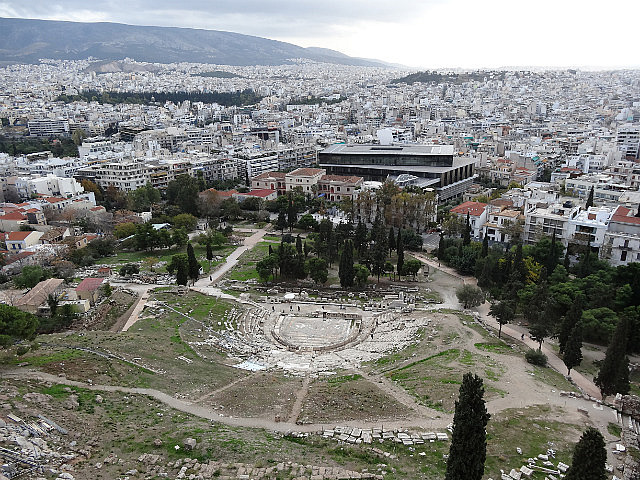
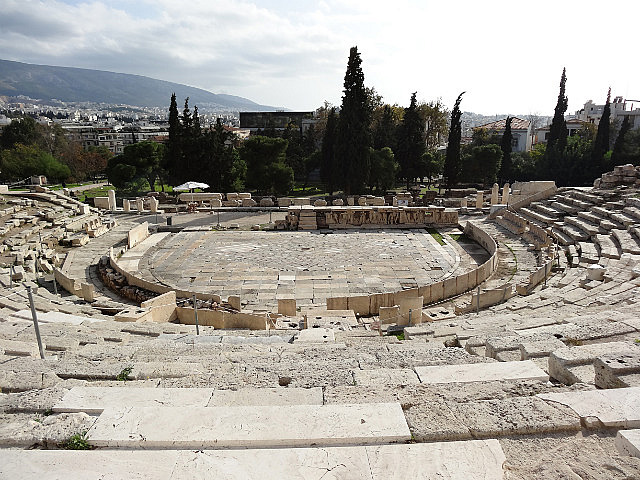
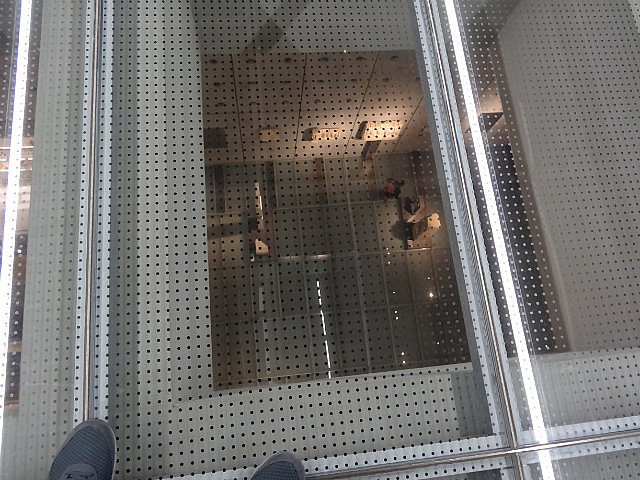
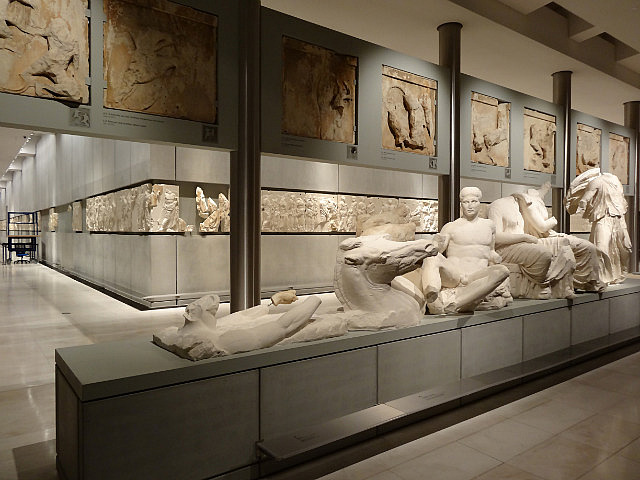



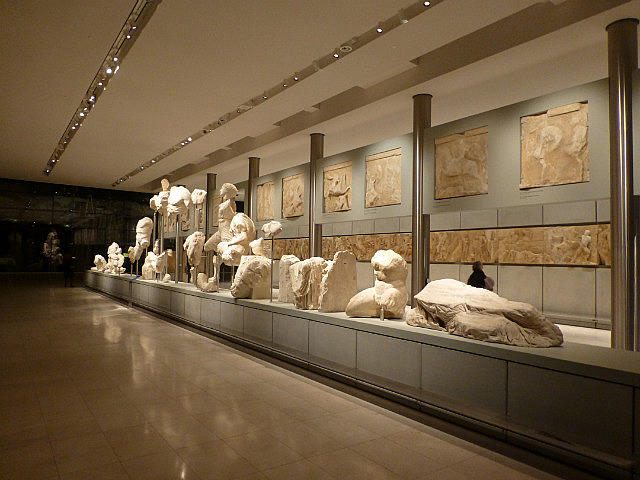
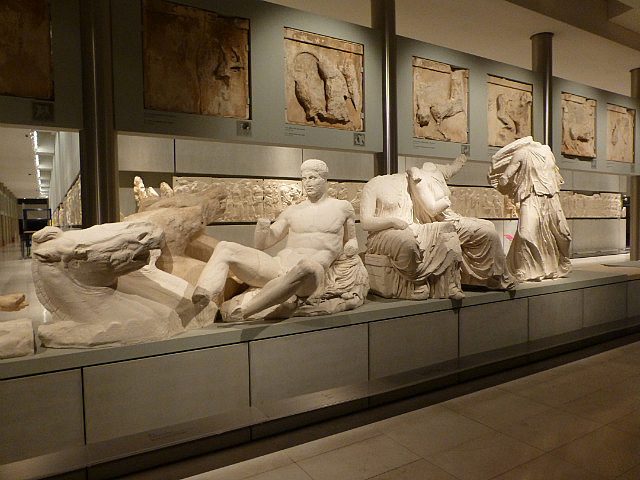
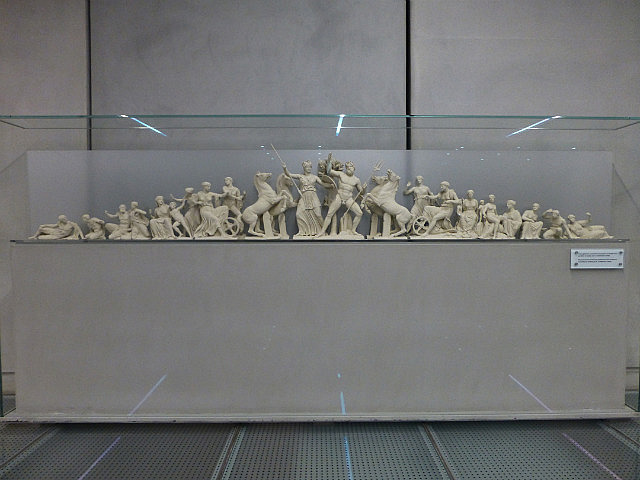
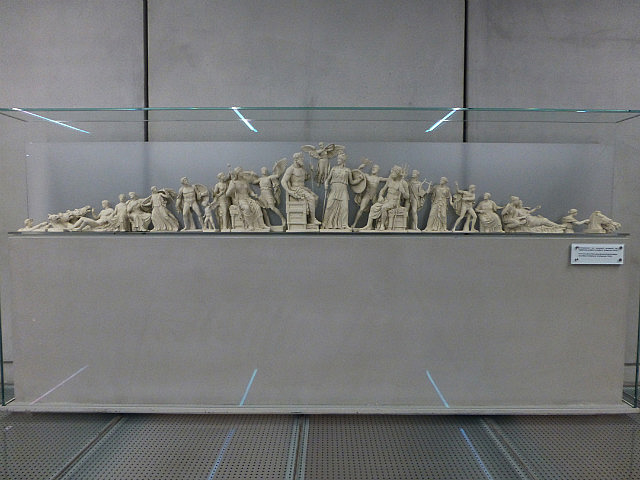

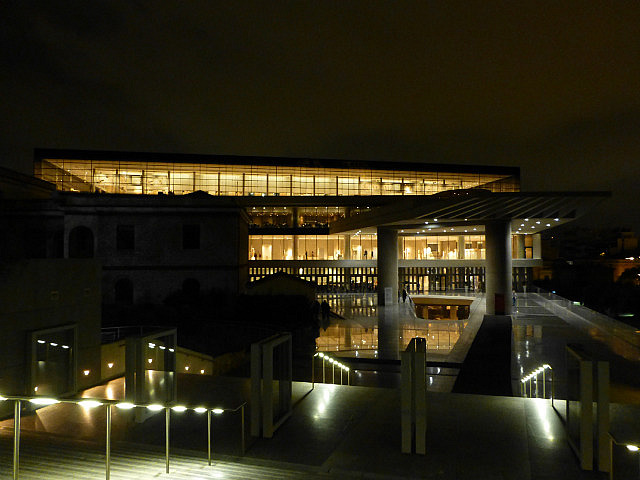
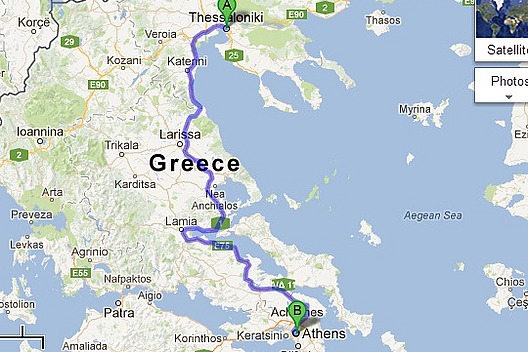
Comments